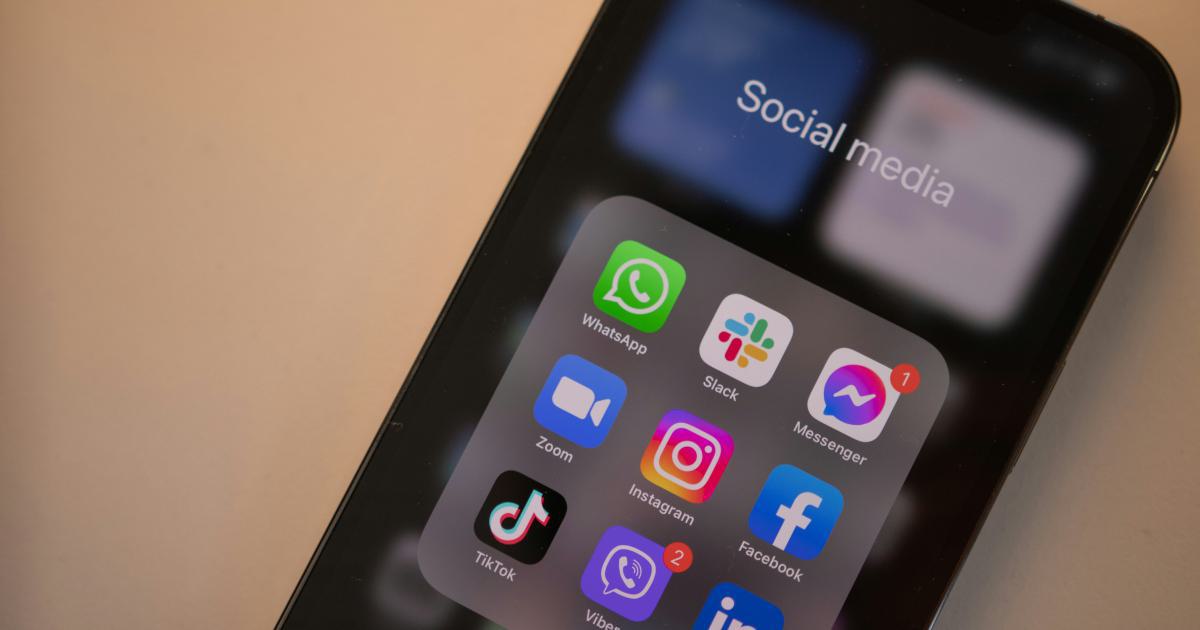Competitor Social Media Analysis: Facebook vs. Twitter for Internet Marketers?


Introduction
In the dynamic world of digital marketing, two of the most prominent social media platforms, Facebook and Twitter, have emerged as essential tools for internet marketers. As these platforms continue to evolve, understanding their unique strengths, weaknesses, and nuances has become crucial for businesses and individuals looking to maximize their online presence and engagement. This comprehensive comparative analysis will delve into the key aspects of Facebook and Twitter, providing internet marketers with valuable insights to help them make informed decisions about their social media strategies.
The comparison will encompass various criteria, including user demographics, content dynamics, engagement metrics, advertising capabilities, and analytical insights. By examining these critical elements, internet marketers will gain a deeper understanding of the advantages and disadvantages of each platform, enabling them to strategically leverage the most suitable platform(s) for their specific marketing goals and target audience.
Overview of Subjects
Facebook: As the world's largest social network, Facebook has evolved into a multifaceted platform that caters to a diverse user base. With over 2.9 billion monthly active users, Facebook offers a vast and engaged audience for internet marketers. The platform's extensive features, such as personal profiles, business pages, groups, and targeted advertising, have made it a go-to choice for a wide range of marketing initiatives, from brand awareness to lead generation and e-commerce.
Twitter: Known for its real-time, concise, and conversational nature, Twitter has carved out a unique niche in the social media landscape. With over 330 million monthly active users, Twitter has become a powerful platform for instant communication, news updates, and influencer engagement. Internet marketers have leveraged Twitter's capabilities to amplify their brand's voice, build relationships with their target audience, and capitalize on trending topics and conversations.
Comparison Criteria
Criterion 1: User Demographics
Facebook's user base is remarkably diverse, spanning a wide range of age groups, genders, and geographical locations. According to recent data, the platform's largest user segment is between the ages of 25 and 34, followed by the 35-44 and 18-24 age groups. The gender distribution is relatively balanced, with 54% of users identifying as female and 46% as male. Facebook's user base is also geographically diverse, with a strong presence in countries like the United States, India, and Brazil.
Twitter's user demographics tend to skew younger, with a significant presence among the 18-29 age group. The platform also has a slightly higher proportion of male users, with a gender distribution of 66% male and 34% female. Geographically, Twitter's user base is more evenly distributed globally, with a strong presence in the United States, Japan, and India.
Criterion 2: Content Dynamics
Facebook's content ecosystem is primarily focused on longer-form, visually-rich posts, ranging from text-based updates to multimedia content like images, videos, and live streams. The platform's algorithm prioritizes content that encourages engagement, such as likes, comments, and shares. Facebook users tend to interact with content that is personal, entertaining, or informative, making it an ideal platform for storytelling and fostering community connections.
In contrast, Twitter's content dynamics are characterized by short, text-based posts (tweets) with a 280-character limit. The platform's fast-paced nature and emphasis on real-time communication encourage users to share concise, attention-grabbing updates, news, and opinions. Twitter's hashtag system and retweet functionality enable the rapid spread of information, making it a valuable platform for tracking trends, participating in discussions, and engaging with influencers.
Criterion 3: Engagement Metrics
Facebook's engagement metrics provide a comprehensive understanding of audience interactions. The platform offers detailed insights into likes, comments, shares, and click-through rates, allowing marketers to gauge the effectiveness of their content and optimize their strategies accordingly. Additionally, Facebook's algorithms prioritize posts that receive high engagement, ensuring that successful content is more likely to be seen by a broader audience.
Twitter's engagement metrics focus on metrics such as retweets, likes, replies, and impressions. While Twitter's engagement data is not as granular as Facebook's, the platform offers valuable insights into the reach and impact of tweets. The ability to track hashtag usage, mentions, and real-time trends on Twitter can provide valuable insights for marketers to identify and capitalize on emerging opportunities.
Criterion 4: Advertising Capabilities
Facebook's advertising platform is highly sophisticated, offering a wide range of targeting options, ad formats, and campaign objectives. Marketers can leverage Facebook's vast user data to precisely target their desired audience based on factors like demographics, interests, behaviors, and even custom audience segments. The platform's advanced ad management tools, such as detailed reporting and optimization features, make it a powerful advertising platform for internet marketers.
Twitter's advertising capabilities have evolved significantly over the years, providing marketers with a range of ad formats, including promoted tweets, sponsored videos, and targeted campaigns. While Twitter's advertising options are not as extensive as Facebook's, the platform offers effective targeting capabilities based on user interests, behaviors, and engagement with specific content or accounts. Twitter's real-time nature and emphasis on conversational interactions can make it a valuable platform for time-sensitive promotions and engaging with audiences in the moment.
Criterion 5: Analytical Insights
Facebook's robust analytics platform, known as Facebook Insights, provides marketers with a wealth of data and insights to track the performance of their content and advertising efforts. Users can access detailed metrics on reach, engagement, demographics, and conversion rates, enabling them to make data-driven decisions and optimize their social media strategies. The platform also offers advanced analytics tools, such as audience segmentation and custom reporting, to help marketers gain deeper insights into their target audience.
Twitter's analytics dashboard offers a range of metrics, including impressions, engagements, engagement rate, and audience insights. While not as comprehensive as Facebook's Insights, Twitter's analytics can still provide valuable data on the performance of tweets, the growth of followers, and the demographics of the platform's users. Marketers can use these insights to understand their audience, identify high-performing content, and refine their Twitter marketing strategies.
Similarities
Both Facebook and Twitter share some fundamental similarities as prominent social media platforms. They both serve as powerful communication and content-sharing tools, allowing users to connect, engage, and exchange information. Both platforms also offer advertising capabilities that enable marketers to reach targeted audiences and measure the effectiveness of their campaigns.
Another key similarity is the emphasis on user-generated content, where individuals and businesses can create and share a wide range of material, from text-based updates to multimedia content. This user-centric approach has been a driving force behind the growth and engagement of both platforms.

Differences
Despite the shared characteristics, Facebook and Twitter also exhibit significant differences that set them apart:
Content Dynamics: As mentioned earlier, Facebook's content tends to be more visually rich and longer-form, while Twitter's content is characterized by shorter, text-based updates with a focus on real-time engagement.
Audience Engagement: Facebook's algorithms prioritize content that encourages deeper engagement, such as likes, comments, and shares, whereas Twitter's emphasis is on rapid dissemination of information through retweets and mentions.
Advertising Capabilities: Facebook's advertising platform is more sophisticated, offering a wider range of targeting options and campaign objectives, while Twitter's advertising capabilities, though growing, are not as extensive.
Analytical Insights: Facebook's analytics platform provides more comprehensive and granular data, allowing marketers to gain deeper insights into their audience and the performance of their content and advertising efforts. Twitter's analytics, while still valuable, are not as robust as Facebook's.

Analysis
The comparative analysis of Facebook and Twitter reveals the unique strengths and weaknesses of each platform, which can have significant implications for internet marketers.
Facebook's expansive user base, visually-rich content ecosystem, and advanced advertising capabilities make it a compelling choice for marketers looking to build brand awareness, foster community engagement, and drive conversions. The platform's extensive analytical insights can also provide valuable data to help marketers optimize their strategies and measure the impact of their efforts.
On the other hand, Twitter's real-time, conversational nature and emphasis on instant communication can be advantageous for marketers seeking to engage with their audience in the moment, participate in industry discussions, and capitalize on trending topics. The platform's ability to amplify content through retweets and mentions can also be an effective way to reach new audiences and build brand visibility.
Ultimately, the choice between Facebook and Twitter (or a combination of both) for internet marketers will depend on their specific marketing goals, target audience, and the nature of their business. Marketers should carefully evaluate the unique strengths and weaknesses of each platform, as well as their own resources and expertise, to determine the most suitable social media strategy.

Conclusion
The comparative analysis of Facebook and Twitter has provided a comprehensive understanding of the key differences and similarities between these two dominant social media platforms. Internet marketers must carefully consider the unique characteristics of each platform, including user demographics, content dynamics, engagement metrics, advertising capabilities, and analytical insights, to develop a tailored social media strategy that aligns with their marketing objectives and target audience.
By leveraging the strengths of both Facebook and Twitter, internet marketers can effectively reach and engage their audience, build brand awareness, drive traffic, and ultimately, achieve their desired marketing outcomes. As the social media landscape continues to evolve, it is crucial for marketers to stay informed, adapt their strategies, and capitalize on the ever-changing opportunities presented by these powerful platforms.
